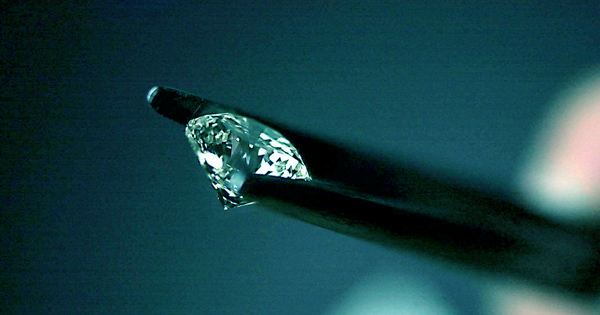Scientists are reluctant to look for an effective way to make diamonds in any lab that is cheaper, faster, and more ethical than traditional diamond-hunting. The history of the diamond industry is littered with conflicts, controlled labor, and monopolies. Not only that, these glittering gems require billions of years of deep exhaustion due to extreme stress and heat before they are ready to be processed into jewelry or industrial machines – resulting in their extreme rarity and price.
Now, researchers at the Australian National University (ANU) and RMIT University have developed a method that can produce diamonds in a matter of minutes at room temperature, a feat never done before.
Jodie Bradby, a professor at the ANU Research School of Physics, said in a statement. “Natural diamonds are usually formed at a depth of about 150 kilometers on Earth over billions of years where high pressures and temperatures are above one thousand degrees Celsius.”
Using a new method they described in their small-scale study, the researchers synthesized two types of diamonds: the regular type used for jewelry and a type of diamond called Lonsdaleite, which is theoretically harder than dense diamonds but found only in graphite meteorites. To make diamonds, vitrified carbon is compressed with extreme pressure. Glassy carbon is a form of crystalline carbon that can form diamond veins when compressed into diamond anvil cells.
Professor Bradby said, “The twist of the story is how we apply pressure. In addition to the very high pressure, we also let the carbon experience something called a ‘shear’ – which is like a twisting or sliding force.” Tracy Hall achieved has been synthesized in Diamond Labs since the first commercially successful synthesis in 1954. But the process is incredibly expensive and requires both intense pressure and extremely high temperatures. However, by changing the way pressure is applied, the researchers discovered that, above all, high temperatures may not be required.
The results suggest that both diamond and Lonsdaleite can be synthesized at room temperature, but more needs to be done now to improve the process. The process has not yet appeared to produce enough diamonds. Both components are highly effective in a variety of industries, from cutting through ultra-hard materials to biomedical applications that include sensing and drug supply. If these can be produced in large quantities, it can have a far-reaching effect.
“The long-term goal of this work is to make more of this rare but very useful diamond.” Professor Bradby said, “Lonsdaleite is likely to be used for cutting ultra-hard materials at mining sites.”
















